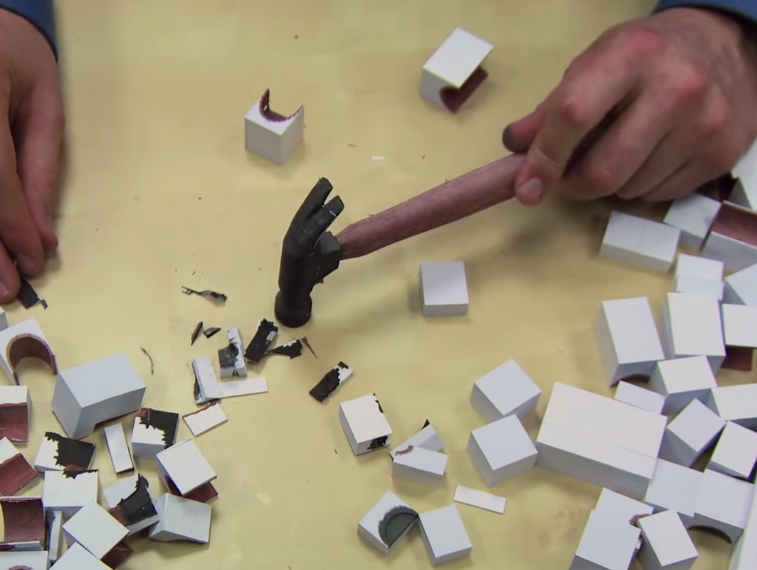The 3D-printing boom is rapidly advancing, but it's still an expensive technology and the printed goods aren't that realistic looking. Most companies can only print pricey, bland forms made of plastic and other chemicals. But Irish company Mcor has developed a cheaper solution that's capable of 3D-printing in full colour.
The Mcor Iris is a paper-based 3D printer that builds objects by cutting and repeatedly gluing together sheets of standard 80 GSM office paper. The machine prints goods up to 20 per cent of the price of rival 3D printers, and it doesn't emit toxic fumes or use solvent dips. But that's not all: it can print objects in full colour and cover the final product in a solid glue that provides enough durability for drilling and tapping. There's also a soft glue option for flexibility.
In the video demonstration below, Mcor Iris made a realistic-looking hammer that was sturdy enough to be tapped against the floor. Using software called SliceIt, Mcor generated a 3D model of a hammer and then used another piece of software called ColorIt to add high-resolution colour and detail to the hammer. The company then used a CMYK inkjet printer to print the outline of the hammer in colour onto paper-thin layers.
The Mcor Iris took that final pile of paper and used a process called Selective Deposition Lamination to cut along the hammer outline, then layer sprayed glue between each sheet of paper, and hot-press all the layers together. The result was a thick sheaf of paper, but then the Mcor team broke away cubes of pre-cut waste material to reveal a solid, vivid hammer beneath. It had a medium wood-like density and actually looked like a hammer. Awesome, right?
READ: 3D printed human organs possible after vascular printing breakthrough
Companies like Staples in the US and Officeworks in Australia are now installing Mcor's machines at select printing centers, where customers will be able to print their own 3D models of not just hammers but absolutely anything imaginable. They can even make water-resistant goods. A fist-sized object is expected to cost up to $12, a price much more affordable than what other 3D printers currently offer.

